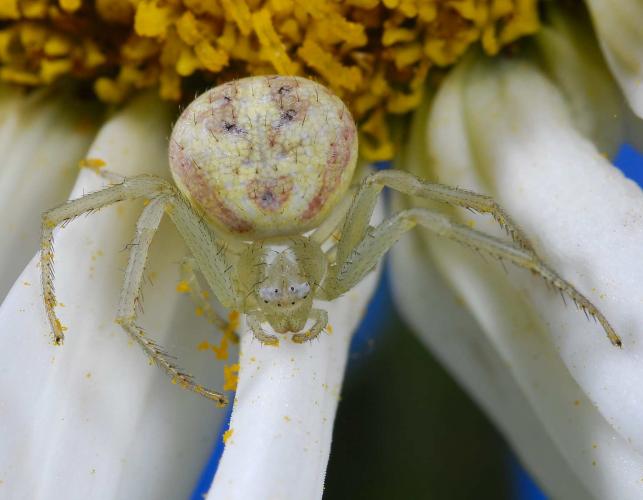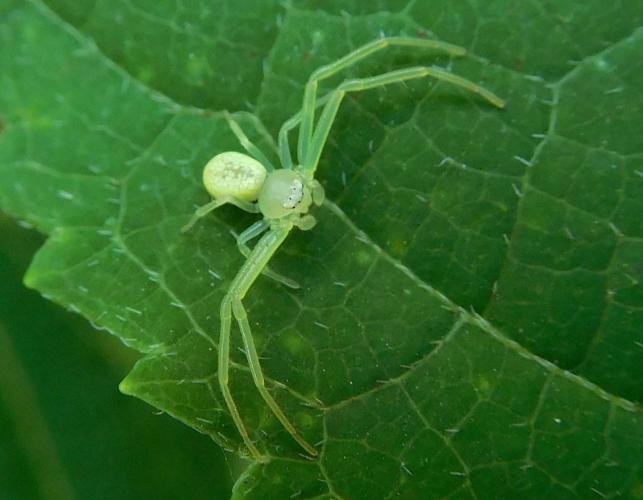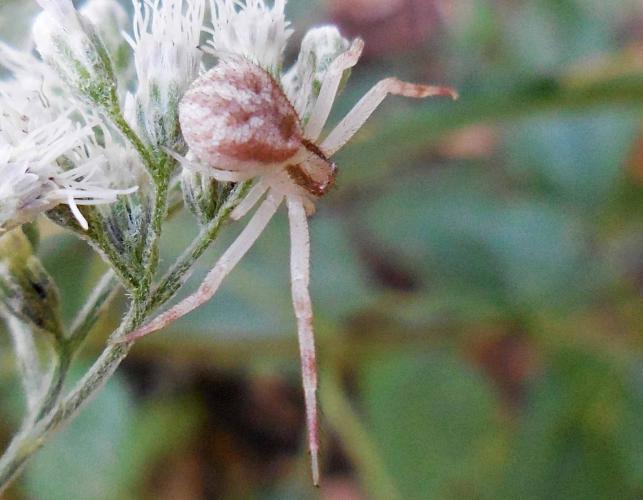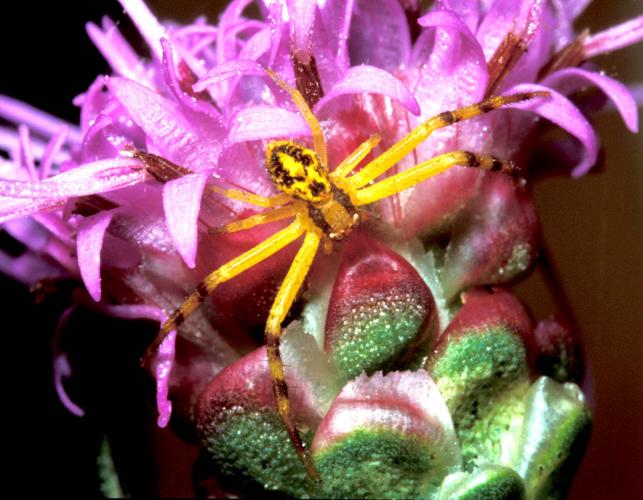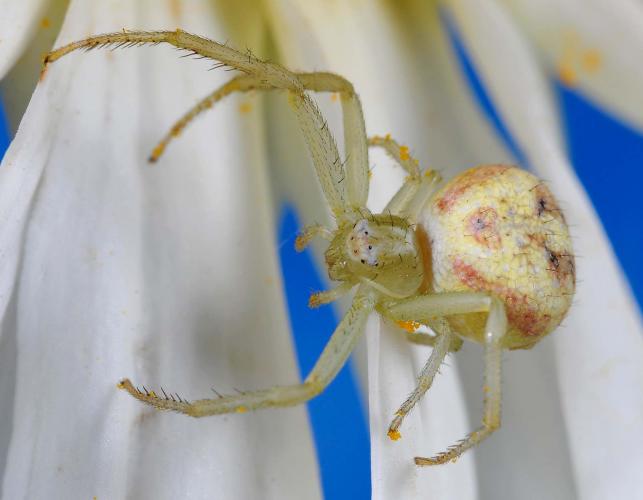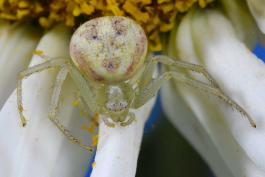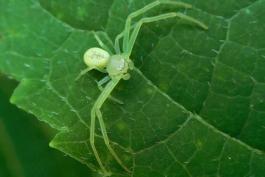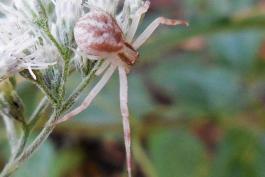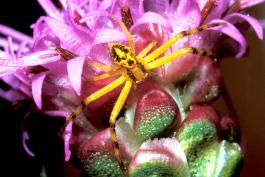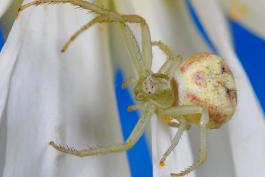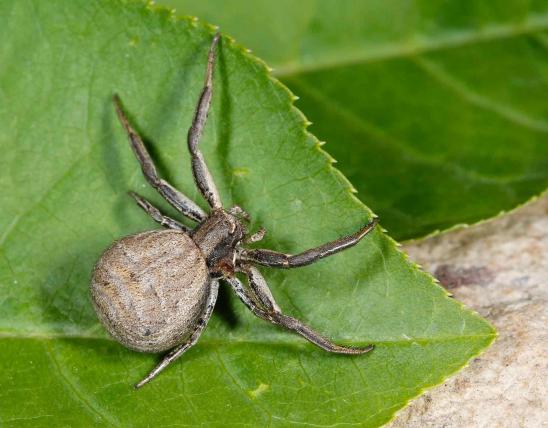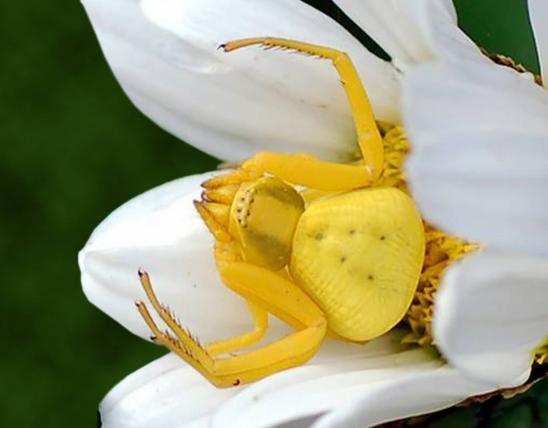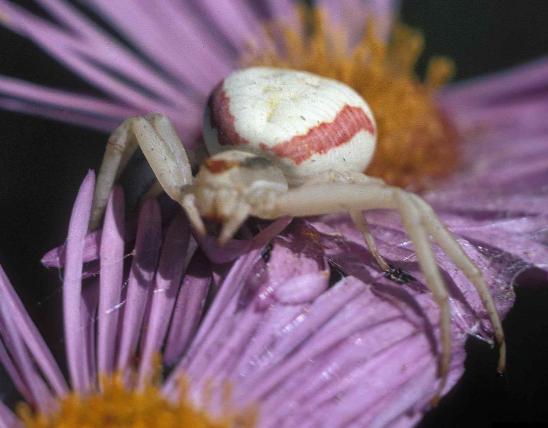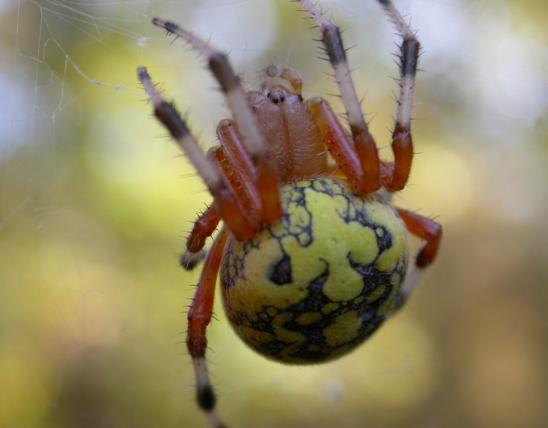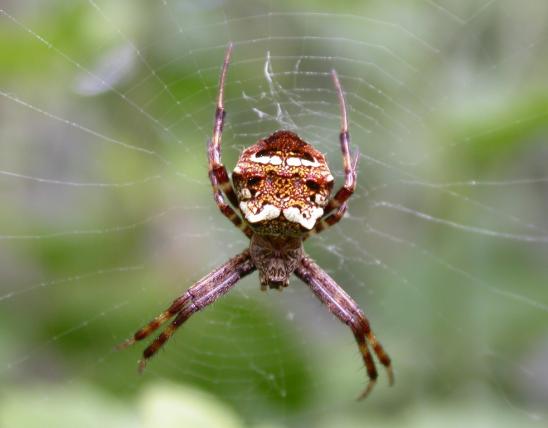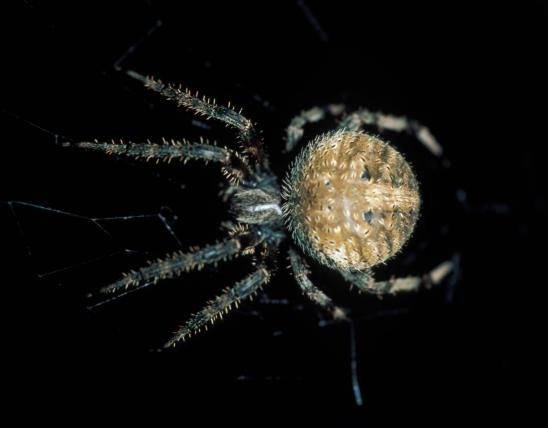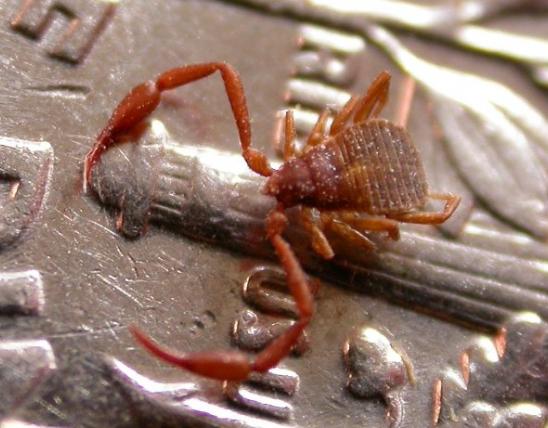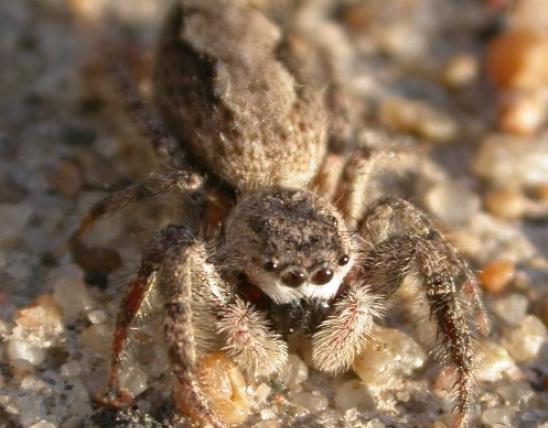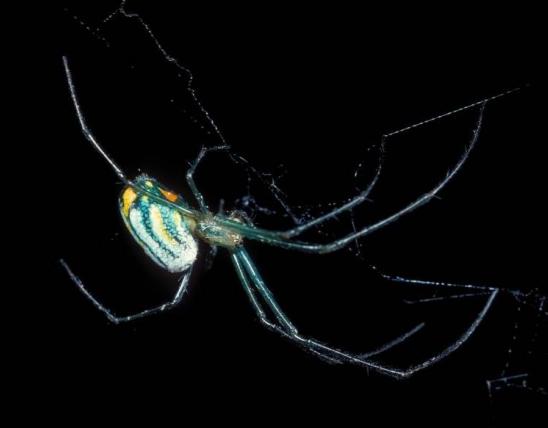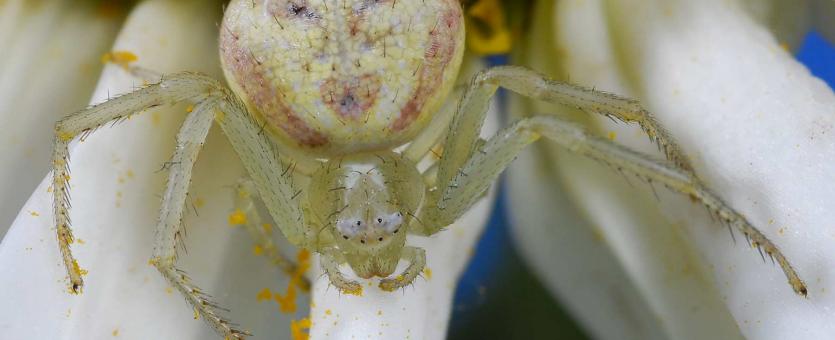
All crab spiders generally resemble crabs: Their legs extend outward from the sides, and they can walk in any direction. Most live in flowers and capture prey simply by grabbing and biting it. Foliage flower spiders are two genera of crab spiders. They are generally smaller than other crab spiders, and their carapaces, abdomens, and legs are spiny.
Size alone is not a good character for distinguishing species, for some adults and spiderlings are similar in size and appearance. Here are some common species.
Misumessus oblongus, the green crab spider, has spines, and the entire body and legs are pale green to silvery white.
Mecaphesa asperata, the northern crab spider, has many spiny hairs covering the top surfaces of the carapace, abdomen, and legs, and it has greenish-yellow or yellow-brown markings (similar to those on the ridge-faced crab spider).
Mecaphesa celer, the swift crab spider, has similar markings, though its overall coloration often has a light tan-pink cast.
Length (not including legs): about ¼ inch (females); males are slightly smaller.
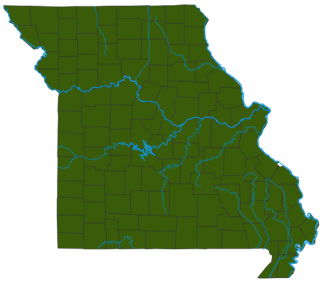
Statewide.
Habitat and Conservation
This group of crab spiders can usually be found in the flowers of daisy fleabanes, asters, and goldenrods, as well as snapdragons, Queen Anne’s lace, and marigolds. They can also be found in grassy habitats such as prairies, open fields, and other grasslands with flowering plants.
Food
Crab spiders don’t use webs to capture their prey; instead, they hide in flowers and wait for insects to come to them. Crab spiders often look like part of the flowers they inhabit. Unlike spiders that spin webs, crab spiders have good vision. When a bee, fly, or other prey lands on the flower seeking nectar, the crab spider attacks, injects venom into the prey, then holds it while drinking its juices.
Status
All of these spiders used to be grouped in the genus Misumenops, but scientists have now placed them into different groups.
Life Cycle
As a general rule, spiders in our area hatch from eggs in spring and spend the growing season eating, maturing, mating, and laying eggs. Females continue creating egg cases as long as the weather holds out. As temperatures cool in fall, their metabolism slows, and they generally die when it freezes. Egg cases overwinter, and spiderlings hatch in spring.
Human Connections
Humans tend to think of pollinators as “good,” so it is natural to view their predators as “bad.” However, the pressure that predators impose on their prey causes those species, over many generations, to possess quick reflexes, a strong capacity for flight, and good vision of their own.
Ecosystem Connections
Predators, including these small spiders, control the numbers of the species they prey on, helping to maintaining the balance of nature. Spiders, including their eggs and young, provide food for other predators, including other spiders.
